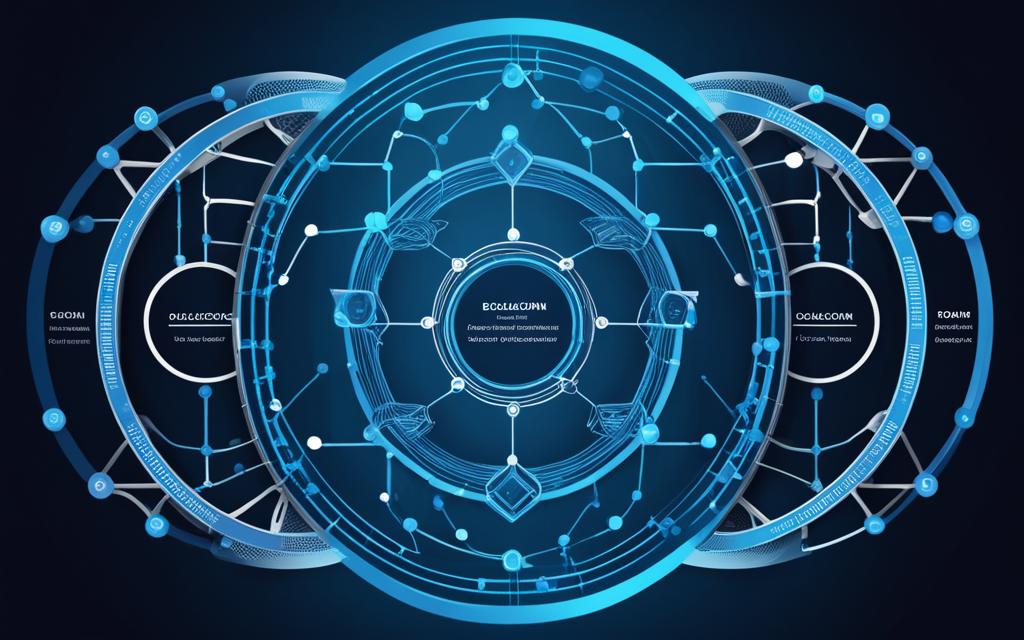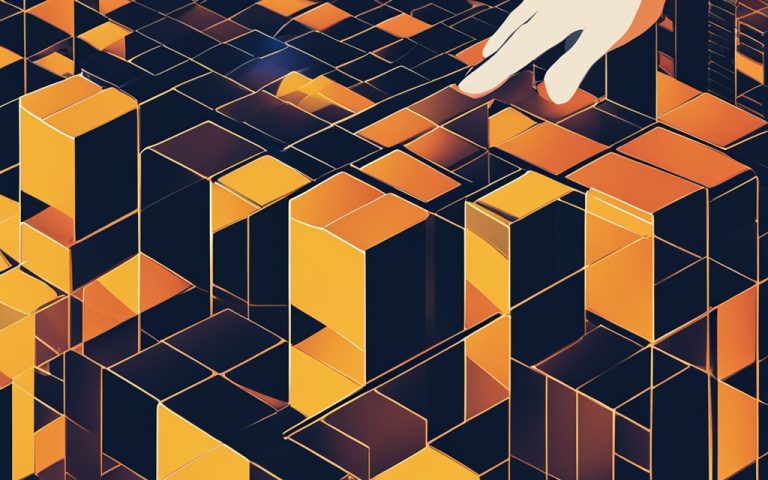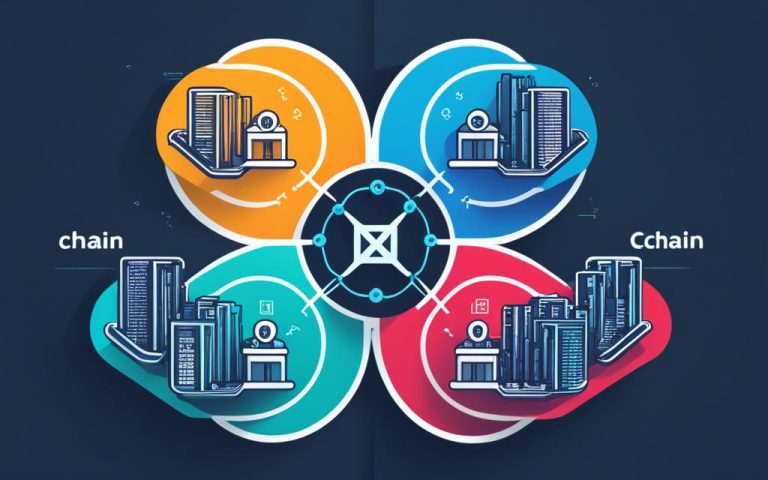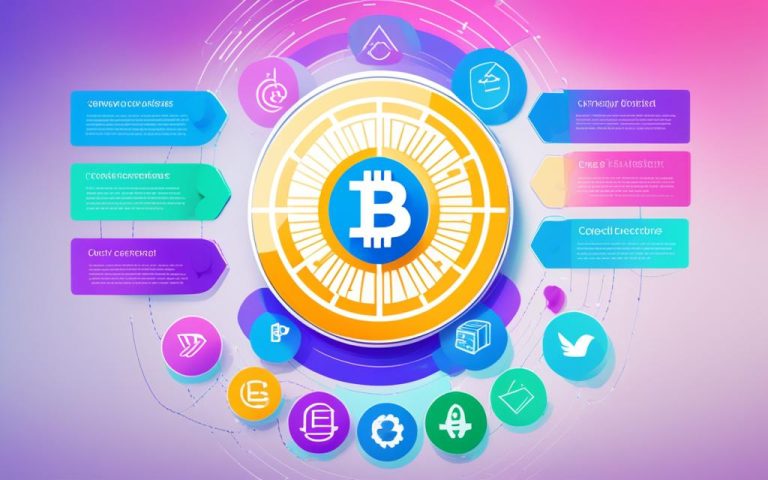Despite what some think, blockchain technology is not dead. It still shows strong potential in various niche areas. Web3 may have lost its early shine, but blockchain still evolves and stays relevant.
The drop in Google searches for blockchain and Web3 doesn’t mean it’s over. It’s important to know the difference between blockchain and cryptocurrencies like Bitcoin, or Ethereum. Cryptocurrencies have had their ups and downs. Yet, the blockchain’s structure has stayed strong.
The journey of Non-Fungible Tokens (NFTs) shows how much this area is changing. They made us see what digital assets could do. Now, we can explore what they really offer us.
It’s not right to say blockchain is dead. We just need to look at it differently. Blockchain will keep moving into areas like finance and healthcare. It brings trust, security, and efficiency because of its transparent nature.
As we move away from the centralized Web 2.0, blockchain will be crucial. Even if Web3 isn’t talked about as much, blockchain’s core ideas will remain. They will shape industries, improve processes, and give more power to people.
The Rise and Fall of the Blockchain Craze
In 2017, Bitcoin’s value jumped from about $900 to over $20,000. This massive rise put blockchain technology in the spotlight. It caught the interest of both investors and tech lovers.
Ethereum saw its currency, Ether, skyrocket too. It secured its spot as the second-biggest cryptocurrency. This surge added to the blockchain excitement.
Ripple, focusing on global payments, also stood out. It teamed up with banks to show how blockchain can be used in real life.
Some blockchain projects didn’t meet their goals, though. Others were scams. This hurt the blockchain world’s image. The hype around blockchain faced a reality check in 2018.
In 2018, Bitcoin and other digital currencies’ prices dropped. Many people had invested without really understanding blockchain. They faced big financial losses.
Still, some blockchain projects kept growing and evolving. Ethereum, for example, stayed strong in the blockchain field.
Pak’s artwork ‘The Merge’ made a big splash. Almost 29,000 collectors bought it for $91.8 million. This showed the growing interest in blockchain assets.
Blockchain technology has its challenges, though. Issues like scaling and energy use need solutions for it to really take off.
People should be careful with blockchain investments. It’s important to do your homework to spot the real opportunities and avoid scams.
The excitement around blockchain may have cooled, but its promise remains. The key is focusing on true technology advancements. This will help continue innovation in the field.
| Statistics | Insights |
|---|---|
| Bitcoin price in 2017 | Rose from around $900 to over $20,000 |
| Ethereum’s native cryptocurrency, Ether | Saw significant price rise in 2017 |
| Ripple | Successful blockchain project for cross-border payments |
| Failed blockchain-based projects | Some projects failed to live up to expectations or were identified as scams |
| Blockchain challenges | Early stages of development with various hurdles to overcome |
To learn more about the blockchain craze, check out these articles:
These articles offer insights into blockchain’s highs and lows, and its future.
The Future of Blockchain Technology
The future of blockchain looks bright despite past challenges. As we address these issues, blockchain could change many sectors.
NFTs became very popular thanks to blockchain. They let people buy, sell, and trade digital stuff securely. This has opened up new chances for artists and collectors.
But, the NFT market has seen better days. Oversupply and less interest have hurt it. Yet, NFTs could be used for more than just trading.
NFTs could help with digital IDs, owning digital stuff, and more. Using technologies like VR, NFTs could offer even more opportunities.
The NFT market is expected to stabilize and grow sustainably. We can achieve a healthier ecosystem that’s good for everyone involved by learning from past mistakes.
The Future of Blockchain Technology
Blockchain technology is still very much alive despite less buzz. Projects like Ethereum and Ripple show its real-world uses. Ethereum keeps growing as a favorite, being the second biggest in its market. Ripple has made strong ties with banks for cross-border payments.
But, blockchain is still early in development and has hurdles. For big success, it must overcome several issues. Scalability and privacy concerns are at the top of this list.
The potential for blockchain is huge, though. It promises to make finance, supply chains, and voting much better. The excitement might have cooled, but blockchain’s innovative force and future impact are still strong.
FAQ
Is blockchain technology dead?
No, blockchain technology is not dead. It’s still useful in certain areas. Yet, Web3, once seen as the internet’s future, is now often ignored or just seen as a blockchain buzzword.
What is Web3?
Web3 was thought to be a new internet version. It would be decentralized and use blockchain. But now, it’s not as popular or interesting to most.
Are blockchain and cryptocurrencies the same?
No, they aren’t the same thing. Blockchain is a technology for recording information. Cryptocurrencies are digital money that use this technology to make secure transactions.
What happened to the blockchain craze?
The frenzy started in 2017 when Bitcoin’s price soared. Ethereum also became well-known. But in 2018, interest faded as cryptocurrency prices fell and some projects failed.
Are there successful blockchain-based projects?
Yes, projects like Ethereum and Ripple have succeeded. Ethereum is very popular now. Ripple works with banks for payments. But, not all projects work out, and some are scams.
What is the future of blockchain technology?
Blockchain could still change many sectors. It’s just starting and faces hurdles. But it could make systems in finance and supply chains better and safer.



















